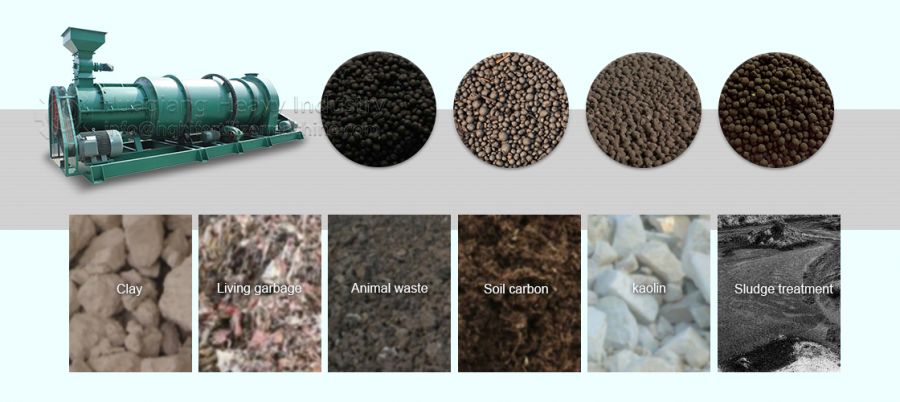The granulation rate of an organic fertilizer granulator directly impacts production efficiency and product quality. To achieve efficient granulation, precise control is required across multiple dimensions, including raw materials, equipment, and processes. The following four core strategies can significantly improve granulation results.

First, raw material pretreatment is a fundamental prerequisite. Organic raw materials must be fully decomposed. Insufficient decomposition results in poor viscosity and looseness, naturally reducing the granulation rate. Particle size must also be controlled. Crushing equipment should be used to maintain a fineness of 80-100 mesh to prevent coarse particles from hindering granulation. Moisture control is particularly critical. The moisture content should be maintained at a stable 25%-35%. Excessively high moisture content can easily lead to clumping and clogging, while excessively low moisture content can hinder granulation. This can be achieved through real-time monitoring and adjustment using an online moisture meter.
Second, precise control of equipment operating parameters is crucial. Parameters vary significantly between different granulator models. For example, the commonly used rotary drum granulator should maintain a rotational speed of 20-30 rpm. A rotation speed that is too high can cause excessive centrifugal force to cause the material to be thrown out, while a rotation speed that is too slow can result in low granulation efficiency. The granulator's inclination angle should be maintained at 3°-5° to ensure that the material is fully tumbled within the drum to form granules. For ring die granulators, the die diameter and compression ratio should be appropriately selected, typically within a range of 1:8-1:12, to match the material characteristics.
Furthermore, optimize the configuration of auxiliary systems. Add a stirring and premixing device to the granulator feed inlet to evenly mix the material with a binder (such as bentonite or starch) and enhance its viscosity. Equip an efficient screening system to regrind and recycle substandard granules (particle size less than 2mm or greater than 5mm) after granulation, creating a closed-loop production process. Furthermore, control the granulation ambient temperature. In low-temperature environments, a heating device can be used to raise the material temperature to 30-40°C to improve material flowability.
Finally, strengthen routine equipment maintenance. Regularly inspect the granulator's inner lining for wear. Severe wear can reduce material adhesion and require prompt replacement. Clear any obstructions in the die holes to prevent uneven pellet formation. Lubricate the drive system components to ensure stable operation and reduce loose pellets caused by vibration.
Through the coordinated optimization of these four aspects, the granulation rate of the organic fertilizer granulator can be increased from 60%-70% to over 85%, while also reducing energy consumption and raw material waste, creating higher economic benefits for the company.